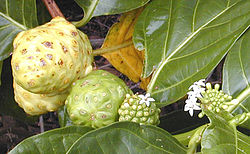ܛܥܘܢܬܐ
Hello, you have come here looking for the meaning of the word ܛܥܘܢܬܐ. In DICTIOUS you will not only get to know all the dictionary meanings for the word ܛܥܘܢܬܐ, but we will also tell you about its etymology, its characteristics and you will know how to say ܛܥܘܢܬܐ in singular and plural. Everything you need to know about the word ܛܥܘܢܬܐ you have here. The definition of the word ܛܥܘܢܬܐ will help you to be more precise and correct when speaking or writing your texts. Knowing the definition ofܛܥܘܢܬܐ, as well as those of other words, enriches your vocabulary and provides you with more and better linguistic resources.

ܛܥܘ̣ܢܬܐ (ܡܐܟܘܠܬܐ)

ܛ̇ܥܘܢܬܐ (ܡܪܟܒܬܐ)
Assyrian Neo-Aramaic
Etymology 1

Derived from the verb ܛܵܥܹܢ (ṭāˁēn, “to carry, bear”) of the noun pattern 12u3tā.
Pronunciation
Noun
ܛܥܘܼܢܬܵܐ • (ṭˁuntā) f (plural ܛܥܘܼܢ̈ܝܵܬ݂ܵܐ (ṭˁunyāṯā))
Inflection
| isolated forms | with possessive pronouns | |||||||
|---|---|---|---|---|---|---|---|---|
| state | form | person | singular | plural | ||||
| m | f | |||||||
| singular | absolute | ܛܥܘܼܢܵܐ (ṭˁūnā) | 1st person | ܛܥܘܼܢܬܝܼ (ṭˁuntī) | ܛܥܘܼܢܬܲܢ (ṭˁuntan) | |||
| construct | ܛܥܘܼܢܲܬ݂ (ṭˁūnaṯ) | 2nd person | ܛܥܘܼܢܬܘܼܟ݂ (ṭˁuntōḵ) | ܛܥܘܼܢܬܵܟ݂ܝ (ṭˁuntāḵ) | ܛܥܘܼܢܬܲܘܟ݂ܘܿܢ (ṭˁuntawḵōn) | |||
| emphatic | ܛܥܘܼܢܬܵܐ (ṭˁuntā) | 3rd person | ܛܥܘܼܢܬܹܗ (ṭˁuntēh) | ܛܥܘܼܢܬܵܗ̇ (ṭˁuntāh) | ܛܥܘܼܢܬܗܘܿܢ (ṭˁunthōn) | |||
| plural | absolute | ܛܥܘܼܢܝܵܢ̈ (ṭˁunyān) | 1st person | ܛܥܘܼܢܝܵܬ݂ܝܼ̈ (ṭˁunyāṯī) | ܛܥܘܼܢܝܵܬ݂ܲܢ̈ (ṭˁunyāṯan) | |||
| construct | ܛܥܘܼܢܝܵܬ݂̈ (ṭˁunyāṯ) | 2nd person | ܛܥܘܼܢܝܵܬ݂ܘܼ̈ܟ݂ (ṭˁunyāṯōḵ) | ܛܥܘܼܢܝܵܬ݂ܵܟ݂ܝ̈ (ṭˁunyāṯāḵ) | ܛܥܘܼܢܝܵܬ݂ܲܘ̈ܟ݂ܘܿܢ (ṭˁunyāṯawḵōn) | |||
| emphatic | ܛܥܘܼܢ̈ܝܵܬ݂ܵܐ (ṭˁunyāṯā) | 3rd person | ܛܥܘܼܢ̈ܝܵܬ݂ܹܗ (ṭˁunyāṯēh) | ܛܥܘܼܢ̈ܝܵܬ݂ܵܗ̇ (ṭˁunyāṯāh) | ܛܥܘܼܢܝܵܬ݂ܗ̈ܘܿܢ (ṭˁunyāṯhōn) | |||
Etymology 2

Tool noun derived as a feminine active noun of ܛܵܥܹܢ (ṭāˁēn, “to carry, bear”).
Pronunciation
Noun
ܛܵܥܘܿܢܬܵܐ • (ṭāˁōntā) f (plural ܛܵܥ̈ܘܿܢܵܬ݂ܵܐ (ṭāˁōnāṯā) or ܛܵܥܘܿܢ̈ܝܵܬ݂ܵܐ (ṭāˁōnyāṯā))
Inflection
| isolated forms | with possessive pronouns | |||||||
|---|---|---|---|---|---|---|---|---|
| state | form | person | singular | plural | ||||
| m | f | |||||||
| singular | absolute | ܛܵܥܘܿܢܵܐ (ṭāˁōnā) | 1st person | ܛܵܥܘܿܢܬܝܼ (ṭāˁōntī) | ܛܵܥܘܿܢܬܲܢ (ṭāˁōntan) | |||
| construct | ܛܵܥܘܿܢܲܬ݂ (ṭāˁōnaṯ) | 2nd person | ܛܵܥܘܿܢܬܘܼܟ݂ (ṭāˁōntōḵ) | ܛܵܥܘܿܢܬܵܟ݂ܝ (ṭāˁōntāḵ) | ܛܵܥܘܿܢܬܲܘܟ݂ܘܿܢ (ṭāˁōntawḵōn) | |||
| emphatic | ܛܵܥܘܿܢܬܵܐ (ṭāˁōntā) | 3rd person | ܛܵܥܘܿܢܬܹܗ (ṭāˁōntēh) | ܛܵܥܘܿܢܬܵܗ̇ (ṭāˁōntāh) | ܛܵܥܘܿܢܬܗܘܿܢ (ṭāˁōnthōn) | |||
| plural | absolute | ܛܵܥܘܿܢܵܢ̈ (ṭāˁōnān) | 1st person | ܛܵܥܘܿܢܵܬ݂ܝܼ̈ (ṭāˁōnāṯī) | ܛܵܥܘܿܢܵܬ݂ܲܢ̈ (ṭāˁōnāṯan) | |||
| construct | ܛܵܥܘܿܢܵܬ݂̈ (ṭāˁōnāṯ) | 2nd person | ܛܵܥܘܿܢܵܬ݂ܘܼ̈ܟ݂ (ṭāˁōnāṯōḵ) | ܛܵܥܘܿܢܵܬ݂ܵܟ݂ܝ̈ (ṭāˁōnāṯāḵ) | ܛܵܥܘܿܢܵܬ݂ܲܘ̈ܟ݂ܘܿܢ (ṭāˁōnāṯawḵōn) | |||
| emphatic | ܛܵܥ̈ܘܿܢܵܬ݂ܵܐ (ṭāˁōnāṯā) | 3rd person | ܛܵܥ̈ܘܿܢܵܬ݂ܹܗ (ṭāˁōnāṯēh) | ܛܵܥ̈ܘܿܢܵܬ݂ܵܗ̇ (ṭāˁōnāṯāh) | ܛܵܥܘܿܢܵܬ݂ܗ̈ܘܿܢ (ṭāˁōnāṯhōn) | |||